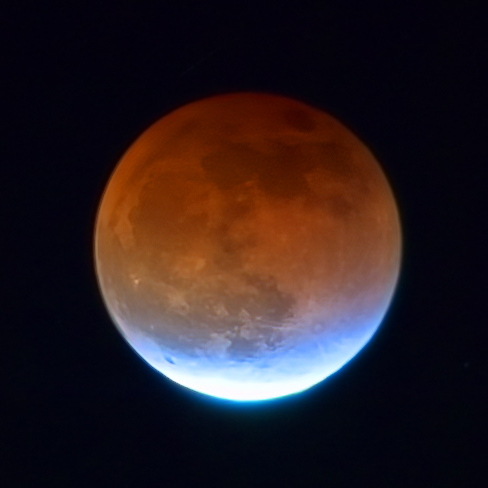cruising along the 3 day old crescent moon from mare crisium leads to this pair of craters with prominent central peaks and terraced walls:
 |
craters patavius and langrenus
3 day old moon 5/4/22 03:04 UTC |
to the left is Patavius, notable for a
-wide double rim
-complex central mountains 1.7 km from the floor and a
-deep fracture from the peaks to the rim of the crater.
 |
| Patavius |
views of petavius are reportedly very sensitive to contrast: "The shadows retreat with surprising speed and for the rest of the lunation, until just after full Moon, Petavius is identifiable as a white oval. Its grandeur then reappears briefly before the whole region is engulfed by the lunar night."(Sir Patrick Moore)
to the right is Langrenus notable for a
-20 km wide terraced rim 3 km high on the eastern side
-1 km central peak
 |
| Langrenus |
there is a ray system on the crater floor which appears when the sun is directly overhead (not evident in this image).
In 1645, Michel Florent van Langren was the first person to draw a lunar map while giving names to many of the features. This is the only one of his named features that has retained his original designation (wikipedia).
Among his contributions were attempts to determine longitude...He believed he could improve the accuracy of longitude determination, particularly at sea, by observing peaks and craters of the Moon as they appear and disappear, hence the map (wikipedia).
between the two craters lies Vendelinus, an ancient crater lacking a central peak who's rounded walls and floor are covered with newer impact craters.  |
| Vendelinus |
image details:
camera ZWO ASI 290mm IR pass filter 850
celestron 11" Edge HD, no barlow
3865 frames @59 fps 6.928 ms gain 351
5/4/22 ~3 AM UTC (5/3/22 8 pm local)
East Bluff, CA
poor seeing, IR filter helped
refs:
https://en.wikipedia.org/wiki/Petavius_(crater)
https://www.skyatnightmagazine.com/astrophotography/moon/petavius-crater/
https://en.wikipedia.org/wiki/Langrenus_(crater)
https://en.wikipedia.org/wiki/Michael_van_Langren#Contributions
https://en.wikipedia.org/wiki/Vendelinus_(crater)























